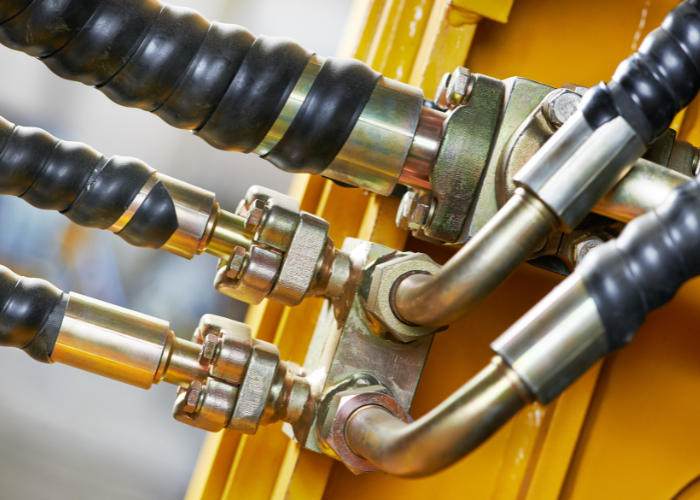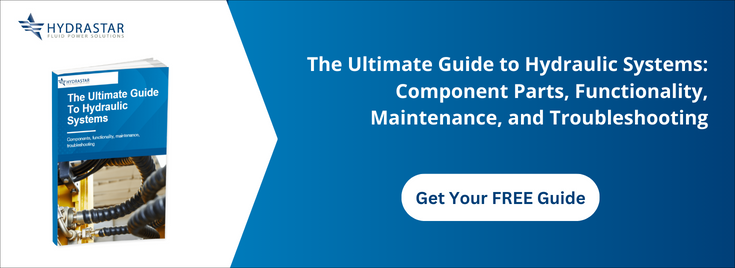Despite the trend towards electrification in many industrial applications, hydraulic engineering provides the power behind a range of groundbreaking applications and innovations in numerous sectors.
In this article, we’ll look at a few of the most innovative hydraulic applications, as an example of what can be achieved through applied fluid dynamics.

1. Electrohydraulic Actuators In Aerospace
In the aerospace manufacturing industry, electrohydraulic actuators play a role in controlling various aircraft systems, including landing gear, flight control surfaces, and thrust vectoring. Using a combination of hydraulic power and electrical control systems to provide reliable and precise actuation, these actuators contribute to the safety and performance of modern aircraft, with a lower risk of failure than purely electric systems. The integration of innovative materials and technologies, such as high strength, lightweight metal alloys and smart sensors, has further enhanced the efficiency and responsiveness of the electrohydraulic actuators used in aerospace applications. Recent advances in the field include compact and high-power density actuators, as well as a range of fault-tolerant and redundant designs to reduce operational risk.
2. Hydraulic Hybrid Vehicles
Mention hybrid vehicles and you immediately think of a hybrid of electric, battery-operated power, combined with an element of internal combustion. However, some vehicle manufacturers have also experimented with hydraulic hybrid vehicles that employ a hydraulic system alongside traditional internal combustion to improve fuel efficiency and reduce emissions. These vehicles utilise hydraulic energy storage systems to capture and store the kinetic energy generated during braking and deceleration, which is then used to assist the engine during acceleration, thus minimising fuel consumption and enhancing the efficiency of the vehicle. In the USA, the Environmental Protection Agency and United Parcel Service (UPS) started deploying hydraulic hybrid delivery vehicles within their fleets in 2023 to explore the interesting and, so far untapped, environmental and sustainability potential of these vehicles.
3. Marine Hydraulic Systems For Offshore Operations
Hydraulic engineering has a central place in marine systems used by many offshore operations, including in the renewable energy sector and oil and gas, providing reliable power for mooring, lifting, and tensioning. Hydraulic winches and cranes are another mainstay of offshore installations, with the capacity to handle heavy loads and equipment with precision and control, without reliance on an external power source. Many modern applications incorporate advanced fluid power components, including hydraulic power units and intelligent control systems, specifically designed to withstand a harsh maritime environment with guaranteed reliable operation.
4. Hydraulic Manufacturing Presses
In the manufacturing sector, hydraulic presses are widely used to shape and form materials such as composites, polymers, and metals. These applications apply controlled pressure to mould, laminate, or stamp materials with extreme precision, and are used in industries ranging from the aerospace to automotive and medical manufacturing. Recent innovations in these technologies include higher performance hydraulic circuits, servo-controlled actuation systems, and AI-operated tooling to accommodate complex part geometries, as well as better real-time process monitoring and automation.
5. Hydraulic Actuators For Renewable Energy Systems
Hydraulic systems frequently power the actuation systems used for solar tracking and wind turbine pitch control in the renewable energy sector. Hydraulic actuators are used, for example, to adjust the orientation of solar panels and large-scale photovoltaic arrays to optimise their exposure to sunlight throughout the day. And in the case of wind turbines – from small commercial units to huge offshore farms – hydraulic pitch control systems facilitate the automatic adjustment of blade angles to regulate the rotational speed and power output of the turbine. When linked up with IOT networked sensors, these systems help optimise the performance of renewable energy infrastructure, as well as facilitating a more responsive approach to maintenance and monitoring.
What Next?
Fluid power systems have the potential to be extremely energy efficient, with strong conservation of energy, excellent reliability, and low operating costs. This makes them perfect for a range of high-risk applications in which safety and reliable performance is critical, and where external power sources are either limited or unavailable. To find out more about the benefits of fluid power systems in industrial applications, please feel free to contact one of our engineers today by 01353 721704.
Image source: Canva


